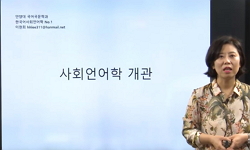The stable carbon and nitrogen isotope values of human (n = 30) and animal (n = 14) remains from the Joyeong-dong burial mounds near Gyeongsan City, South Korea, are presented in this paper. The human and animal bones from each burial type also were r...
http://chineseinput.net/에서 pinyin(병음)방식으로 중국어를 변환할 수 있습니다.
변환된 중국어를 복사하여 사용하시면 됩니다.
- 中文 을 입력하시려면 zhongwen을 입력하시고 space를누르시면됩니다.
- 北京 을 입력하시려면 beijing을 입력하시고 space를 누르시면 됩니다.

조영동고분군 출토 인골과 동물 뼈의 분석을 통한 고대 경산지역의 계층별 식단 복원 = Reconstruction of Human Diets in the Ancient State Based in Gyeongsan Using Stable Isotope Analysis on the Human and Animal Bone Remains from the Joyeong-dong Mounds, South Korea
한글로보기https://www.riss.kr/link?id=A108404306
- 저자
- 발행기관
- 학술지명
- 권호사항
-
발행연도
2022
-
작성언어
Korean
-
주제어
Imdang tombs ; Social class ; Stable isotopes ; Paleodiet ; MixSIAR ; 경산 임당유적 ; 조영동고분군 ; 절대연대 ; 안정동위원소 ; 고식단 ; MixSIAR 모델
-
등재정보
KCI우수등재
-
자료형태
학술저널
-
수록면
859-886(28쪽)
- 제공처
-
0
상세조회 -
0
다운로드
부가정보
다국어 초록 (Multilingual Abstract)
The stable carbon and nitrogen isotope values of human (n = 30) and animal (n = 14) remains from the Joyeong-dong burial mounds near Gyeongsan City, South Korea, are presented in this paper. The human and animal bones from each burial type also were radiocarbon dated in order to construct the absolute chronology. The main purpose of the research was to reconstruct human diets and social structures in the Proto-Three Kingdoms period through the stable isotope analysis of human and fauna remains from the Joyeong- dong mounds. Radiocarbon dating results showed that the Joyeong-dong burials were used from approximately 80 BC to 394 cal BC. The isotopic data indicate that the ancient people of Imdang consumed a diet mainly based on domesticated C3 plants and wild games (birds and herbivores). The results from the MixSIAR model showed that game birds represented the highest contribution to the overall diet of the Imdang people, indicating that the intensive hunting of game birds took place. Our results also showed that elites consumed more animal proteins than their retainers. Especially, in the case of the elites, the contribution of marine animals in the overall diet was high, suggesting that the regular consumption of marine fish and shellfish were a privilege for the elite class. Our study confirms that Imdang society was a highly stratified society where there was a large difference in terms of access to food resources available to each individual. In addition, it was possible to establish that the sacrificed animals found inside the graves had been used both as edible food items, as well as grave goods symbolizing the wealth of the deceased. This research therefore provides new information about the nature of resource use and social status in an early ancient state (Apdok-guk) on the Korean Peninsula.
국문 초록 (Abstract)
본 연구는 경산 임당유적 가운데 조영동고분군에서 출토된 인골과 동물 뼈의 골화학적 분석을 통해 당시의 식생활을 복원하고자 하는 시도이다. 골화학 분석에 앞서 시료의 탄소연대를 측...
본 연구는 경산 임당유적 가운데 조영동고분군에서 출토된 인골과 동물 뼈의 골화학적 분석을 통해 당시의 식생활을 복원하고자 하는 시도이다. 골화학 분석에 앞서 시료의 탄소연대를 측정하여 시료의 정확한 연대를 파악하고 탄소 및 질소 안정동위원소 분석과 통계학 모델인 MixSIAR 방법을 이용하여 각각의 식료 비율을 계산하고자 하였다. 조영동고분군 출토 인골 및 동물 뼈의 탄소연대측정 결과 단곽묘 출토 인골은 대략 80BC의 연대를 보였으며, 주부곽묘 출토 인골은 170 AD~394 AD 연대를 보였다. 그리고 안정동위원소 분석결과 당시의 사람들은 C3계열의 곡물과 과실을 주로 먹었으며, 동물성 식료로는 야생 조류와 어패류를 주로 먹었다는 사실을 확인할 수 있었다. 따라서 고분에 함께 매장되었던 조류와 어패류들은 매장 의례 공물이었을뿐만 아니라 당시에 평소에도 자주 먹었던 식재료였음을 알 수 있었다. 특히 전체 식단의 구성에서 꿩이나 기러기와 같은 야생조류의 비중이 매우 높았는데, 이를 통해서 당시 사람들이 조류 사냥에 집중했었음을 알 수 있었다. 그리고 계층별 식단에서도 주피장자의 조류와 어패류 비중이 순장자에 비해 월등히 높은 것으로 보아, 당시 사회적 지위에 따라 섭취했던 음식이 서로 달랐음을 알 수 있었다. 이번 연구를 통해서 경산지역 고대사회의 식생활과 생업경제를 복원하고, 계층 간의 식단 차이가 존재하였음을 확인할 수 있었다.
동일학술지(권/호) 다른 논문
-
2~4세기 사로권역 철기의 부장체계 조직화와 위세경제 소비 구조
- 한국고고학회
- 장기명
- 2022
- KCI우수등재
-
- 한국고고학회
- 하승철
- 2022
- KCI우수등재
-
기하학적 형태측정법을 이용한 영산강 마한 일상토기 생산체계에 대한 예비적 고찰: 심발을 중심으로
- 한국고고학회
- 허진아
- 2022
- KCI우수등재
-
- 한국고고학회
- 오대양
- 2022
- KCI우수등재




 스콜라
스콜라



